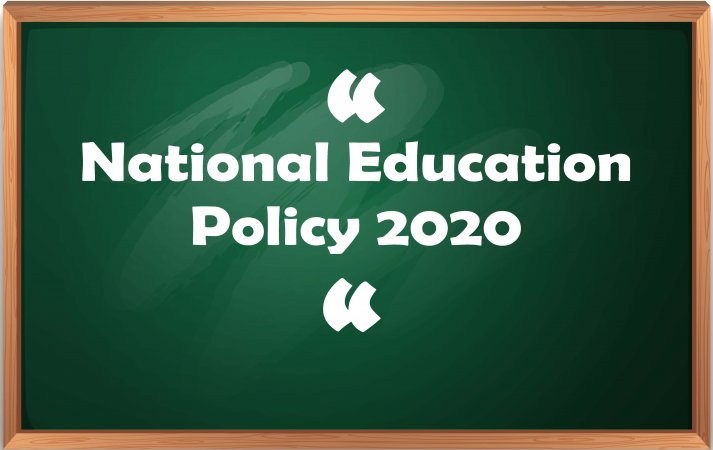National Education Policy 2020 India
Summary- There are many new points to look out for at National Education Policy 2020. This blog will guide you with the points, highlights, and features of it. The Union Cabinet has proposed a new education policy for India called the National Education Policy with many new changes.
Take a look at the highlights, salient features, and key points of this policy below.
National Education Policy 2020 Highlights
* The policy ensures universal access to all levels of schooling from lower primary to grade 12.
* Ensuring good care and quality education to all children between 3 to 6 years of age.
* There will be no separations between arts and sciences, curricular and extra-curricular activities, vocational and academic activities.
* National Education Policy will give more emphasis on promoting multilingual and Indian languages until grade 5. From grade 8 and beyond will be home language or mother tongue or regional language or local language.
* Special attention will be provided to Socially and Economically Disadvantaged Groups (SEDGs).
* There will be the availability of all resources through school complexes and clusters.
* Establishment of the national mission on foundational literacy and numeracy.
* More exposure to vocational education in school and higher education system.
* Increase of GER in higher education to 50%.
* Board exams to conduct on two occasions during the schooling years. One will be called the main examination and the other one for improvement if required.
* The integral part of higher education will be professional education. All the health-science universities, technical universities, legal and agricultural universities, or any institutions in such fields must aim to become multi-disciplinary institutions.
* To achieve 100% youth and adult literacy.
* The center and the state will join hands together to increase public investment in the education sector and reach 6% GDP at the earliest.
* To set up National Research Foundation.
Salient Features Of New Education Policy 2020
Now, as we have known, the highlights of NEP, let’s look at its salient features below.
* The Purpose Behind NEP
The National Education Policy is a comprehensive framework that guides the development country’s education. This policy was needed back in 1964 when Congress MP Siddeshwar Prasad criticized the Government for lacking vision and philosophy education. During the same year, a 17-member Education Commission under the UGC Chairmanship of DS Kothari constituted to draft a national and coordinated policy on education. The Parliament had passed the first education policy in 1968 based on these suggestions. 2020s NEP was released under the leadership of Prime Minister Narendra Modi.
* The Implementation Of Reforms
The NEP ensures a broad direction, some of which is not mandatory to follow. Education being a concurrent subject, both the center and the state can make laws based on it. Such things might not happen immediately. The government has set the target till 2040 to implement the entire policy. This policy won’t be possible without sufficient funding. The 1968 NEP was a failure due to insufficient funds.
The government plans to set up subject-wise committees. Members will represent relevant ministries under the central and state levels to incorporate plans for each aspect under NEP. Planning will take place yearly basis based on progress against the target.
* Emphasis On Mother Tongue On English Schools
Private schools are asked to change the medium of instruction. A senior ministry confirmed that the provision of mother tongue as the medium of instruction was not mandatory in states. Since education is a concurrent subject, kids will be taught in their mother tongue or regional language wherever possible.
* Educational Plan For Foreign Players
The state universities among the top 100 in the world can set up campuses in India. The government may follow the QS World University Rankings to select universities for the purpose of Institute of Eminence status. Moreover, these things won’t work until the HRD ministry introduces a new law, including the details of how the foreign universities plan to operate in India. The operation of foreign universities is limited in India. More than 650 foreign education have made arrangements in India.
* Four-Year Multidisciplinary Bachelor Program
Under the four-year proposal program of NEP, students are free to exit after one year with a course completion certificate, with a diploma degree after two years, and after three years with a bachelor’s degree. If a student wishes to do majors, the four-year program will provide in-depth knowledge in the subject. Depending on the performance, a student after a four-year bachelor’s program can directly enter a research degree based on academic performance. Master’s degree programs will be the same as they are, after which students can opt for a Ph.D. program.
* The Impact On M.Phil Programs
Normally, a student can opt for Ph.D. programs soon after completing a master’s degree. This practice is still ongoing globally. In many universities, including the UK universities, the M.Phil degree was considered a research program between master's and a Ph.D. Most of them who have joined the M.Phil program have not ended up with a Ph.D. degree. Slowly, the M.Phil degree has faded out in favor of a direct Ph.D. program.
Key Points Of New Education Policy 2020
Let’s have a look at the key points of NEP 2020 for school education and higher education below:
School Education
* NEP aims to universalize education from preschool to secondary level with 100% GER in school education by 2030.
* To bring the children back in the mainstream via an open schooling system.
* The current 10+2 system will be replaced by a new 5+3+3+4 curricular structure between the age groups 3 to 8, 8 to 11, 11 to 14, and 14 to 18 years.
* Children under 3 to 6 years of age are recognized globally as a crucial stage for developing a child’s mental faculties.
* All students can take the board examinations twice, and the method of examination has become easier.
* Vocational education will begin from class 12, along with internships.
* No language will be forced upon any children. Teaching the subjects in the child’s mother tongue or regional language until class 5.
* By 2030, teachers need to have a minimum qualification of 4 years B.Ed. Degree.
Higher Education
* By 2035, GER for higher education will be raised to 50% and the addition of 3.5 crore seats for higher education.
* The undergraduate program will be for 3 to 4 years with multiple exit options and certifications based on the year.
* There will be discontinuation in the M.Phil course. All the UG courses, PG courses, and Ph.D. courses shall be interdisciplinary.
* Establishment of Academic Bank of Credits for credit transfers.
* The apex body will be the National Research Foundation created for catering a strong research culture and capacity across higher education.
* The HECI (Higher Education Commission of India) will be known as a single umbrella body for the whole higher education exclusive of medical and legal education.
* Public and private institutions are to follow the same set of norms for their regulation, academic standards, and accreditation.
* Over time, every college must develop into an autonomous degree-granting college or constituent college of a university.
In A Nutshell
Thus, you now know the highlights, features, and key points of NEP. I hope this above information has helped you out. This policy will surely bring a fruitful change in the education sector of India.
Are you looking out for more information in this field or searching for finance classes, competitive classes, entrance examination coaching and much more? Rely on multiple service listing domains online. These domains will provide the right service for you based on your location, budget, need, etc.







